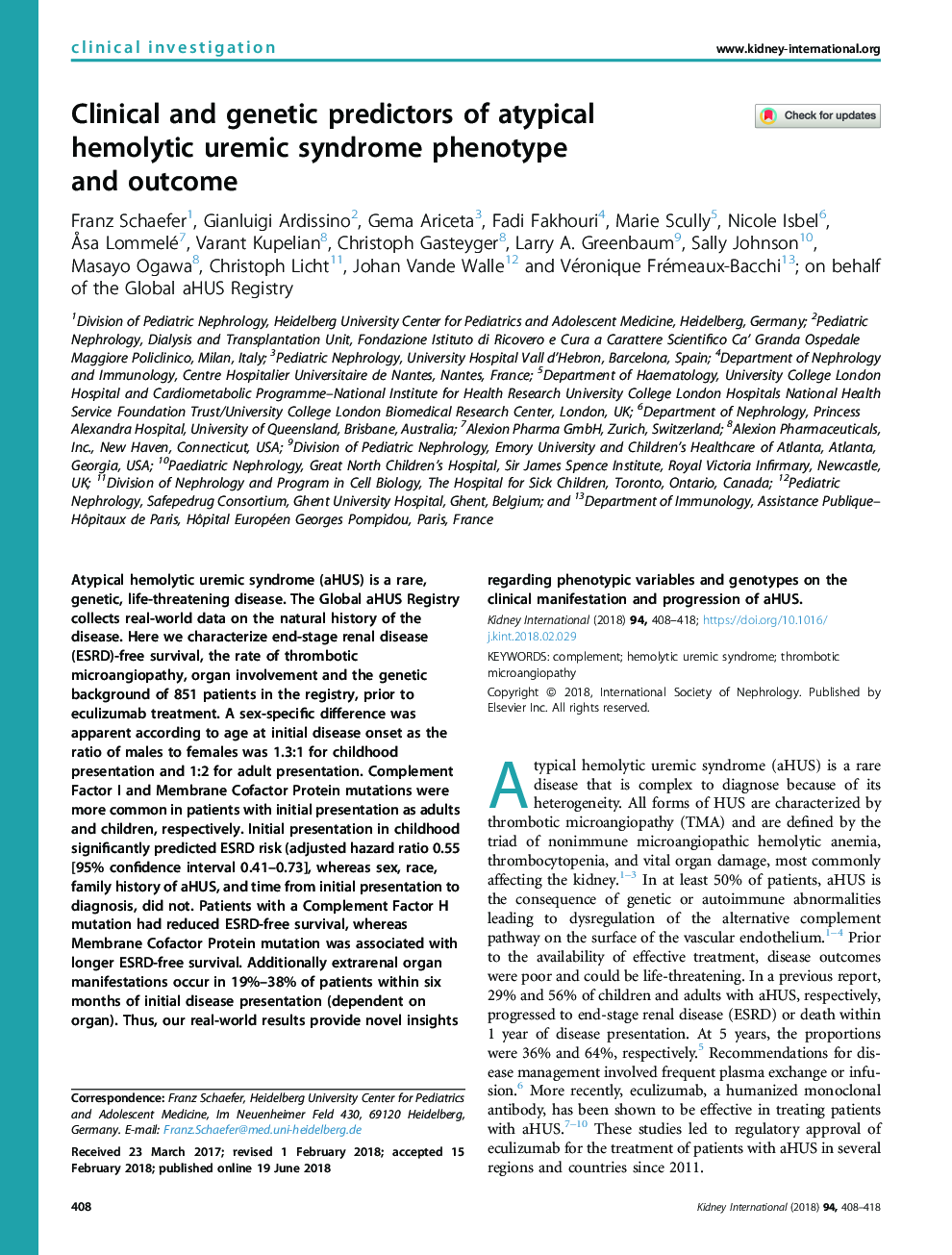| Article ID | Journal | Published Year | Pages | File Type |
|---|---|---|---|---|
| 8772549 | Kidney International | 2018 | 11 Pages |
Abstract
Atypical hemolytic uremic syndrome (aHUS) is a rare, genetic, life-threatening disease. The Global aHUS Registry collects real-world data on the natural history of the disease. Here we characterize end-stage renal disease (ESRD)-free survival, the rate of thrombotic microangiopathy, organ involvement and the genetic background of 851 patients in the registry, prior to eculizumab treatment. A sex-specific difference was apparent according to age at initial disease onset as the ratio of males to females was 1.3:1 for childhood presentation and 1:2 for adult presentation. Complement Factor I and Membrane Cofactor Protein mutations were more common in patients with initial presentation as adults and children, respectively. Initial presentation in childhood significantly predicted ESRD risk (adjusted hazard ratio 0.55 [95% confidence interval 0.41-0.73], whereas sex, race, family history of aHUS, and time from initial presentation to diagnosis, did not. Patients with a Complement Factor H mutation had reduced ESRD-free survival, whereas Membrane Cofactor Protein mutation was associated with longer ESRD-free survival. Additionally extrarenal organ manifestations occur in 19%-38% of patients within six months of initial disease presentation (dependent on organ). Thus, our real-world results provide novel insights regarding phenotypic variables and genotypes on the clinical manifestation and progression of aHUS.
Related Topics
Health Sciences
Medicine and Dentistry
Nephrology
Authors
Franz Schaefer, Gianluigi Ardissino, Gema Ariceta, Fadi Fakhouri, Marie Scully, Nicole Isbel, Ã
sa Lommelé, Varant Kupelian, Christoph Gasteyger, Larry A. Greenbaum, Sally Johnson, Masayo Ogawa, Christoph Licht, Johan Vande Walle,
